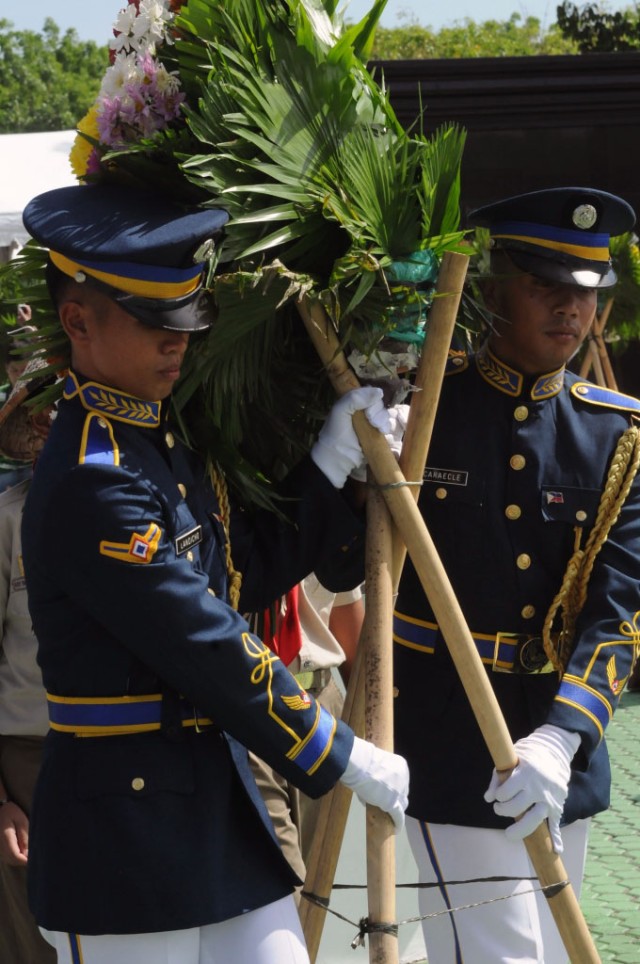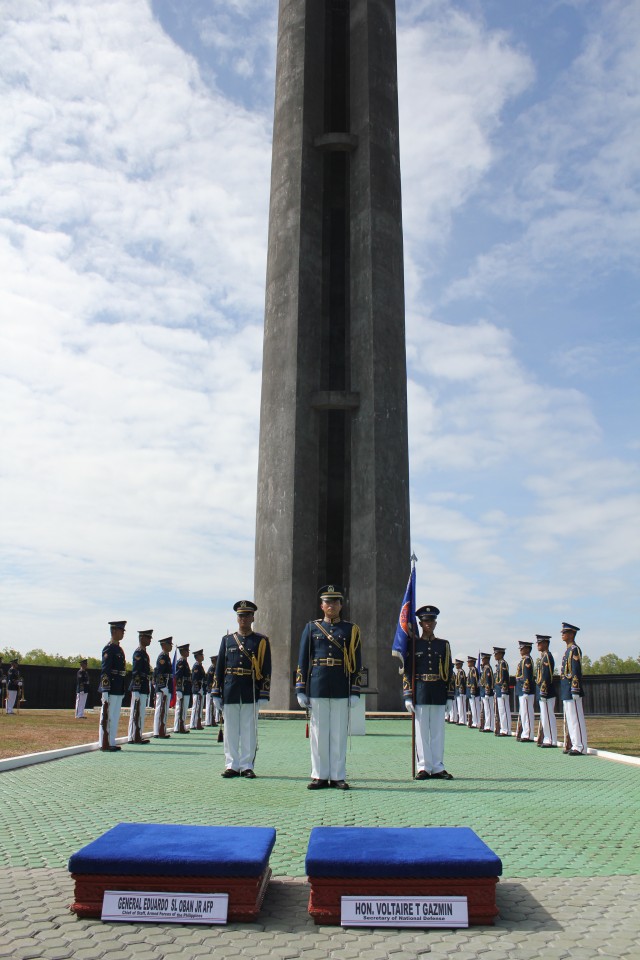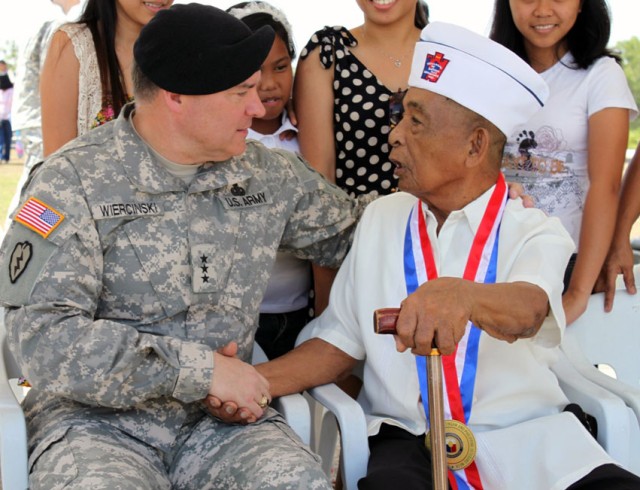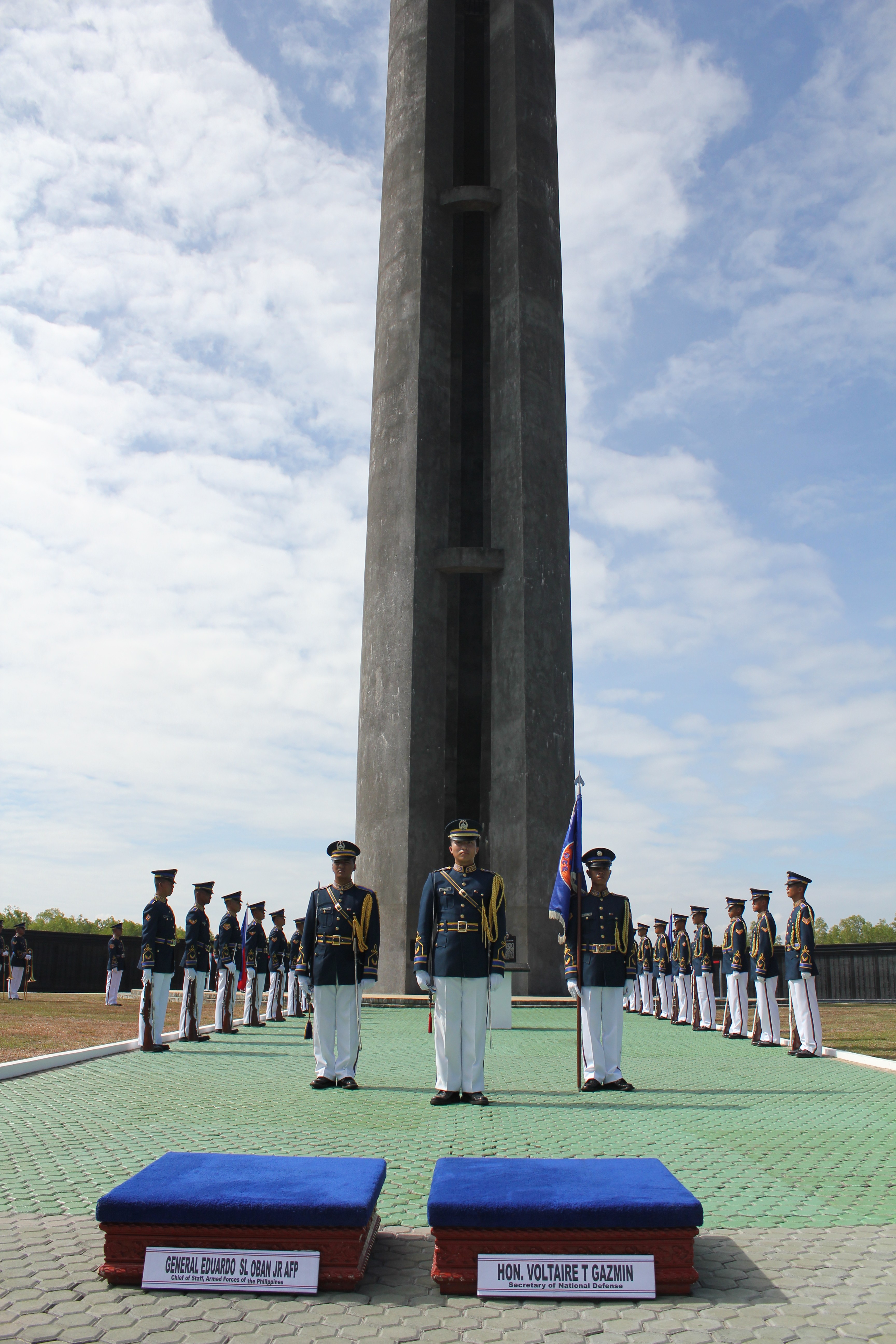TARLAC, Philippines -- Distinguished visitors, servicemembers, veterans and members of the community attended a wreath-laying ceremony April 10, to remember the Bataan Death March and honor World War II veterans from the Philippines, United States, and allied nations.
The brutal 60-mile Death March ended here in 1942, where Allied prisoners of war were incarcerated at Camp O'Donnell. Today, a national monument pays tribute to the thousands of servicemembers who gave their lives in defense of freedom.
"We should not forget the 10,000 lives that were lost," said Vice Governor of the Tarlac Province Pearl Pacada.
She said we can also learn from the surviving veterans who moved forward after their appalling experience.
Lt. Gen. Francis J. Wiercinski, U.S. Army Pacific commander, was among the distinguished visitors to place a wreath at the base of the monument. He called the experience, "humbling."
"This is hallowed ground," said Wiercinski. "It was an honor to meet the family members of World War II veterans."
Several Filipino World War II veterans received plaques to commemorate their service. The oldest veteran in attendance was 101 years old.
Czech Republic Ambassador to the Philippines Josef Rychtar also recognized Czech servicemembers who were among the Allied prisoners of war subjected to the horrific march.
"They were fighting alongside, shoulder-to-shoulder," Rychtar said.
U.S. forces are in the Philippines taking part in Balikatan 2011. Balikatan, meaning "shoulder-to-shoulder" in Tagalog, the official language of the Philippines, is a joint exercise between U.S. and Philippine armed forces.
USARPAC directs Balikatan side-by-side with the Armed Forces of the Philippines to develop interoperability, cooperation, and the armed forces' ability to respond quickly and work together effectively to provide relief and assistance in the event of natural disasters and other crises that threaten public safety and health.
The exercise, held from April 5 to April 15, which overlaps with Veterans Week, a time of recognition in the Republic of the Philippines.
Related Links:
Balikatan to team US Soldiers with Filipino troops
Balikatan participants bring joy to Philippine orphanage
Cobra blood a winning recipe for survival training at Balikatan








Social Sharing